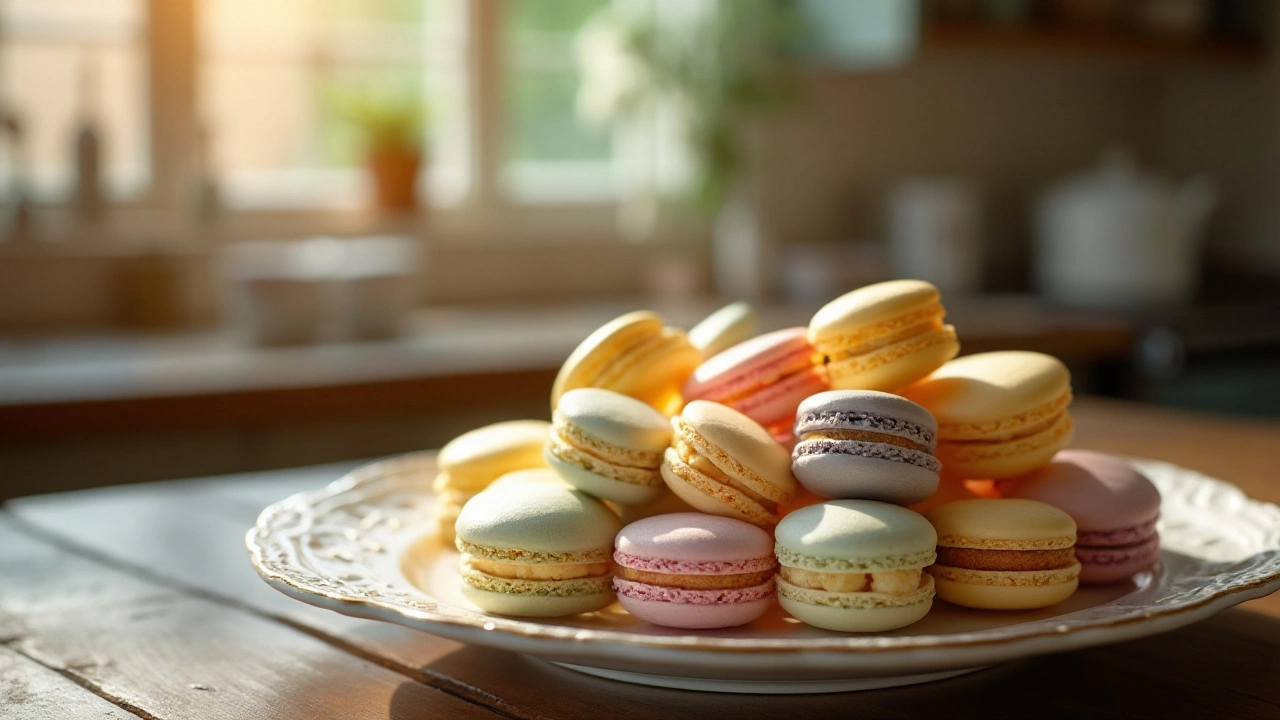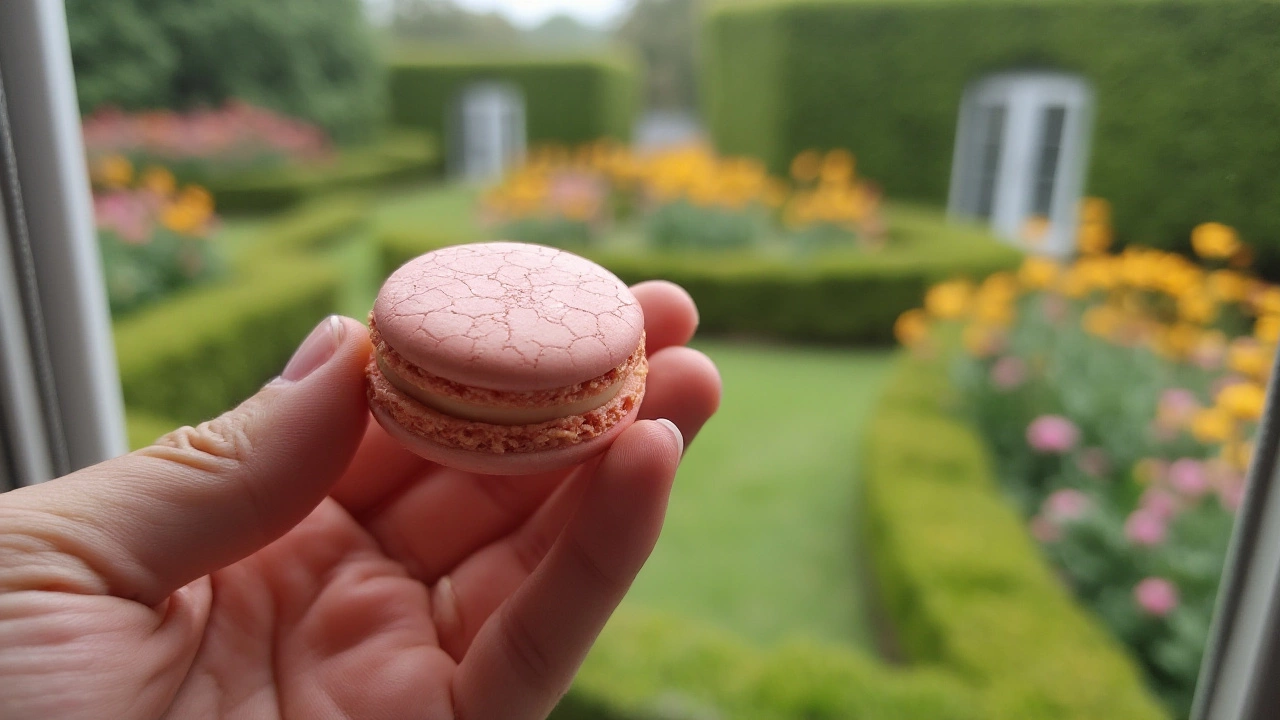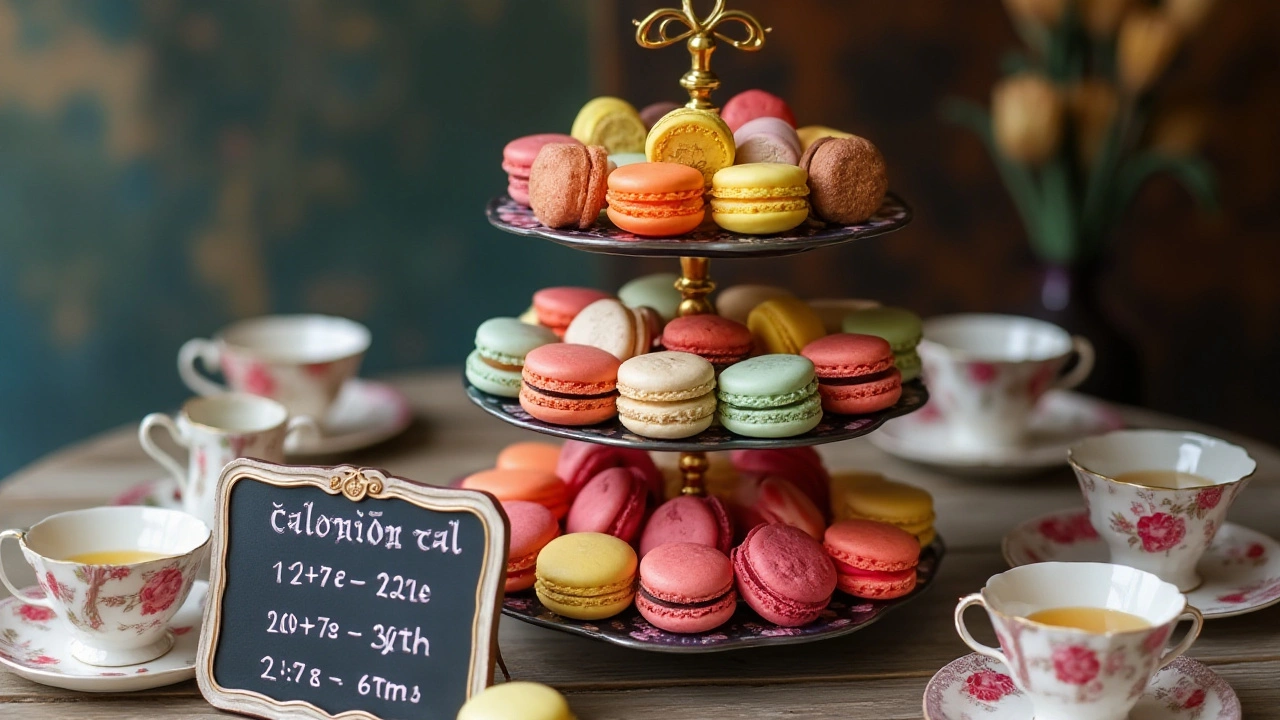
Few desserts match the elegance and delicacy of the macaron. With its roots in France, this colorful confection has captured the hearts and taste buds of dessert lovers around the world. But as delightful as they are to eat, many wonder just how indulgent this sweet treat might be in terms of calories.
This article dives into the calorie content of macarons, providing a close look at the factors that influence their nutritional value. From the choice of ingredients to the method of preparation, find out how these little delights can fit into your diet. Plus, learn some tricks to enjoy macarons without the calorie regret.
- What Makes Up a Macaron?
- Calorie Breakdown per Macaron
- Factors Influencing Calorie Count
- Tips for Enjoying Macarons Lightly
What Makes Up a Macaron?
Macarons, those vibrant and dainty confections, are a symphony of textures and flavors wrapped in a petite, colorful shell. At their core, macarons consist of two key elements: the outer shells and the luscious filling that binds them together. The shells are typically made from a combination of ground almonds, egg whites, and powdered sugar, creating a paste known as almond flour or meal, which gives them their signature light and airy texture. A bit of magic happens during baking, as each shell forms a smooth top with a delicate crispness, while the interior remains chewy and soft.
Creating the perfect macaron is both an art and a science. The egg whites must be beaten to stiff, glossy peaks, a critical step that gives the macaron structure and lift. The process of folding the almond mixture into the beaten egg whites is known as "macaronage," where achieving the right consistency is vital. The batter should flow like lava, which allows it to settle smoothly on the baking sheet, forming the round and uniform shape macarons are famous for. Once piped, the shells are left to rest, forming a thin crust on top. This step, called "croûtage," helps develop the iconic 'feet' at the base of each shell once baked.
It's fascinating how such seemingly simple ingredients transform into something so elegant. The filling, the flavorful bridge between the cookies, can vary widely, adding to the macaron's versatility. Classic fillings include buttercream, ganache, or fruit preserves, each bringing its own unique twist. Chocolate ganache, for instance, offers a rich, indulgent flavor, while a lemon curd filling introduces a tart, refreshing note, each elevating the sensory experience a macaron provides.
In a nod to culinary creativity, today's macarons are crafted in a kaleidoscope of colors and flavors, from lavender and pistachio to salted caramel and matcha. Still, beneath the modern flair lies a meticulous process that requires patience, precision, and an understanding of each ingredient's role. As Pierre Hermé, a world-renowned pastry chef known as the 'Picasso of Pastry,' once said,
"Filling defines the personality of the macaron." It's this harmonious blend of form and flavor that gives macarons their cherished place in the world of confections.
The nutritional content of a macaron can vary significantly depending on the ingredients used and the size of each piece. Typically, a macaron will contain 70 to 100 calories, driven by the almond meal and sugar content, among others. While high in flavor, these elements also contribute to the macaron's caloric nature, prompting enthusiasts to savor them mindfully as they enjoy their intricate beauty and taste.

Calorie Breakdown per Macaron
When it comes to macarons, appearances can indeed be deceiving. These dainty French confections are light, airy, and almost ethereal with their smooth, crisp shells encasing a luscious filling. Yet, despite their modest size, macarons can hold a surprising calorie punch. Typically, a standard macaron contains between 70 to 100 calories. This number might fluctuate based on various factors such as the size of each macaron and the ingredients used in its creation. Providing a unique symphony of flavor and texture, the core ingredients for macarons include almond flour, egg whites, sugar, and a touch of food coloring. But it is the fillings that really seal the calorie deal. Common flavors like vanilla or chocolate usually stick to the lower end of the calorie spectrum, whereas richer and creamier fillings such as salted caramel or ganache can propel the calorie count upwards.
The calories in a macaron are predominantly sourced from sugar and fat, originating from the almond flour and the butter or cream used in fillings. As delightful as they are, these elements contribute significantly to the calorie total. It’s an intricate balance: the delicate touch of almond flour capturing that subtle nutty taste, sugar that provides both structure and sweetness, and egg whites which offer that satisfying, chewy interior. It becomes clear why macarons are a favorite indulgence; their texture and flavor profile are unmatched. One factor to bear in mind is the size of these sweets. Standard macarons usually measure around 3 to 5 centimeters in diameter. Larger variants, often filled with more decadent ingredients, can naturally have higher calorie contents.
For those curious about how different macarons compare, here’s a small breakdown in an easy-to-glance format:
| Flavor | Average Calories |
|---|---|
| Vanilla | 85 |
| Pistachio | 92 |
| Chocolate | 95 |
| Salted Caramel | 100 |
Being mindful of portion sizes is crucial when enjoying these treats. The tempting array of flavors can easily lead one to indulge in more than a single serving. An interesting note, according to a culinary expert from La Cuisine Paris, is that "macarons should be savored, not devoured," emphasizing the importance of treating these sweets as a special indulgence rather than a casual snack. Understanding the calorie content aids in aligning this indulgence with one’s dietary intentions without feeling deprived of such a culinary delight.

Factors Influencing Calorie Count
Macarons, known for their charming colors and distinctive flavor, might appear to be just airy bites of joy, but their calorie content can vary significantly depending on numerous factors. Understanding what contributes to their calorie count could help you enjoy these treats more responsibly and insightfully. First, the size of a macaron is a primary determinant of its calorie content. While the quintessential macaron maintains a relatively uniform diameter of about three to four centimeters, there are variations that can be found across bakeries, especially outside of France, which may lead to an increase in the caloric value. In essence, a larger macaron will naturally encompass more ingredients, hence more calories.
Another crucial factor is the choice of fillings. The most classic macaron filling is a rich buttercream, made with butter, eggs, and sugar, each adding a considerable amount of energy to the count. However, alternatives like chocolate ganache or fruit jams can alter this. Ganache, often containing cream and chocolate, can add both a vibrant flavor and a significant caloric increase, whereas fruit-based fillings might be lighter yet still need sugar for the perfect tangy balance. The type of almonds used for the macaron shells also matters. By using premium almond flour, both flavor and texture improve, but these almonds contribute fat and proteins, increasing the calorie load compared to those produced using regular almond meal.
The amount and type of sugar can transform the calorie content, too. Traditional macarons utilize a combination of white granulated and powdered sugar, both of which are calorie-dense. Some artisanal bakers opt for less refined varieties like cane sugar or alternative sweeteners such as honey or agave syrup, which might not drastically cut calories but offer different nutritional profiles and flavors. Lastly, let's not forget the influence of food coloring. While they contribute minimally to overall caloric intake, some colorings may include small sugar quantities or other additives, enhancing the calorie total slightly. It's fascinating how such tiny ingredients can add up in what seems like an innocent treat.
"Baking is an art form, and every ingredient plays an integral part, not just in taste but in nutrition," says renowned pastry chef Dominique Ansel, highlighting the importance of mindful baking.
While these factors provide an essential framework for understanding calories in macarons, experimentation in flavors and fillings is vast, leading to unique versions that may differ substantially. As such, no two macarons are exactly identical when it comes to calories, even if they may look similar on the outside. Being aware of these subtle differences is part of what makes enjoying a macaron such a complex and delightful experience.

Tips for Enjoying Macarons Lightly
Macarons may be the quintessential sweet treats for special occasions or just to brighten a dreary afternoon, but if you're watching your calorie intake, there are ways to indulge smartly. One of the first tips is moderation. These delightful confections can easily add up in calories, especially if you find yourself reaching for another one—or two. By mindfully enjoying just one or two macarons, you can savor their unique flavors without consuming too many calories.
Selecting lighter fillings can also help reduce the calorie content of your macaron experience. Traditional buttercream or ganache fillings can be calorie-dense, so consider options like fruit-based fillings or even a light yogurt blend to cut down on calories while enhancing the flavor profile. Making these small swaps doesn't compromise on taste but rather gives you a new way to experience the lovely varieties that macarons offer.
If you're in a creative mood, why not try your hand at making macarons at home? This way, you have complete control over the ingredients and can opt for lower-calorie alternatives. Use almond flour, which is naturally lower in calories compared to regular flour, and swap sugar for a natural sweetener like stevia or erythritol. Not only does this allow you to enjoy your macarons without guilt, but it's also a fun and rewarding process. According to a study by the Culinary Institute, baking at home can reduce consumption of unhealthy fats and sugars significantly by making conscious ingredient choices.
Portion control is essential. When serving macarons, pair them with a healthy accompaniment to make a balanced treat. A side of fresh berries or a lightly sweetened herbal tea can complement the macarons and fill you up without adding too many extra calories. Thus, combining macarons with healthy snacks is an excellent strategy for satisfaction without overindulgence.
A well-known pastry chef once said, "Macarons are not just a bite; they are an experience." This emphasizes the importance of mindful eating. Taking the time to really appreciate the texture, flavors, and aroma of each macaron can lead to greater satisfaction with less consumption. Practice mindful eating techniques like chewing slowly and savoring each bite, enhancing the overall experience.